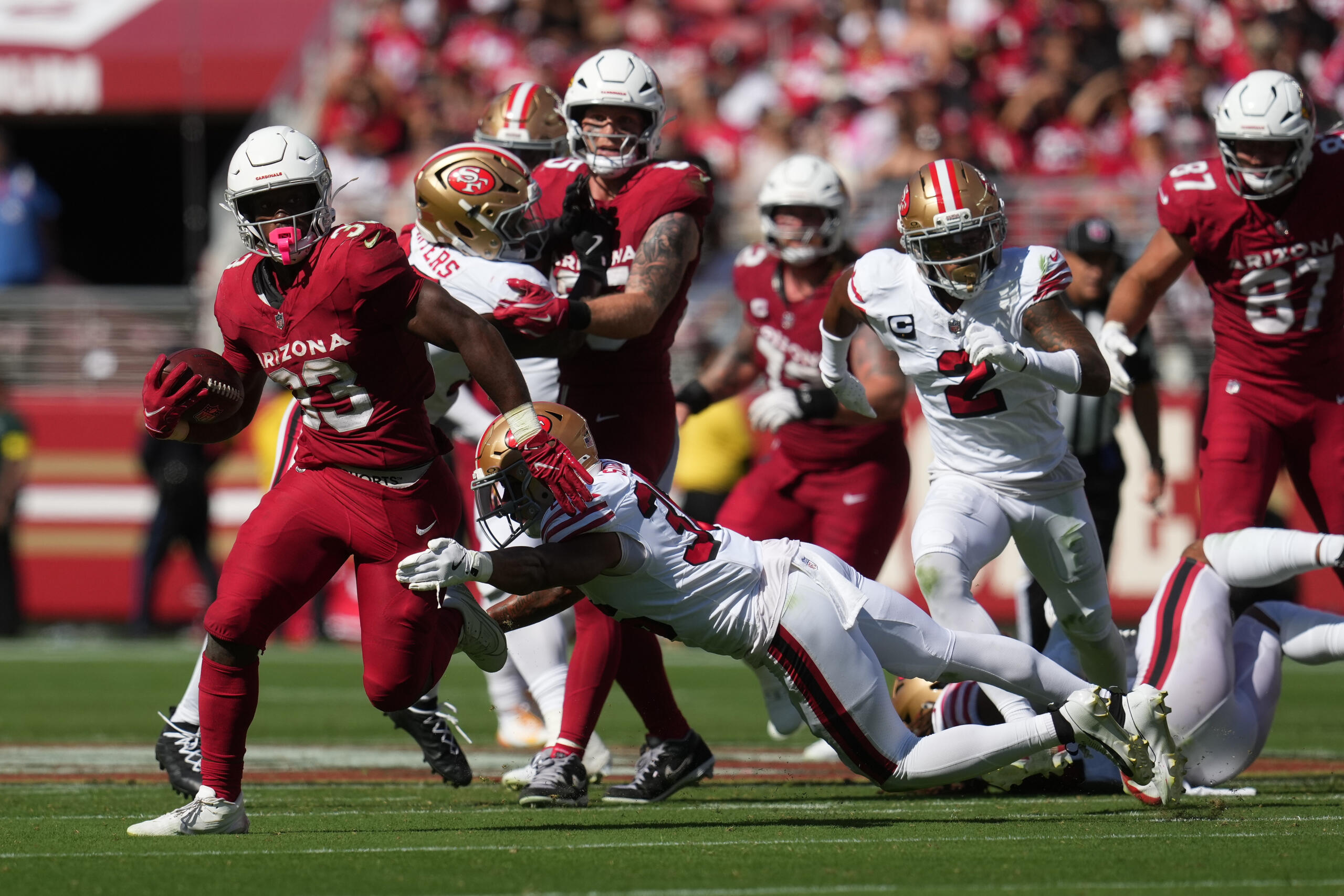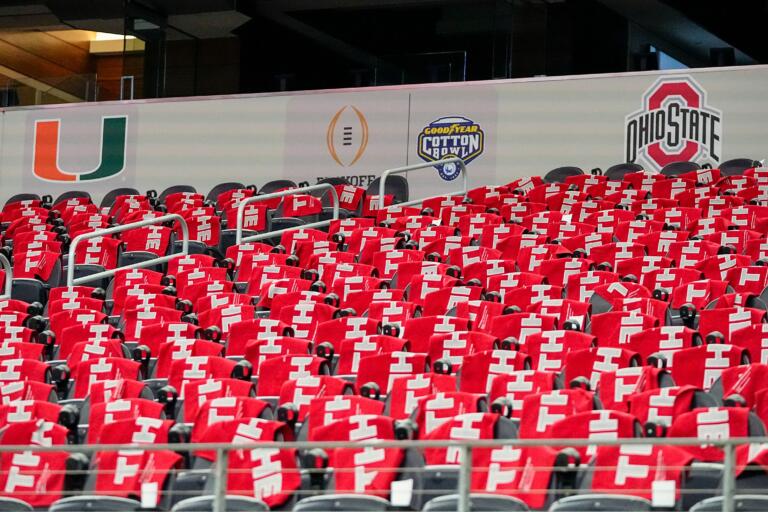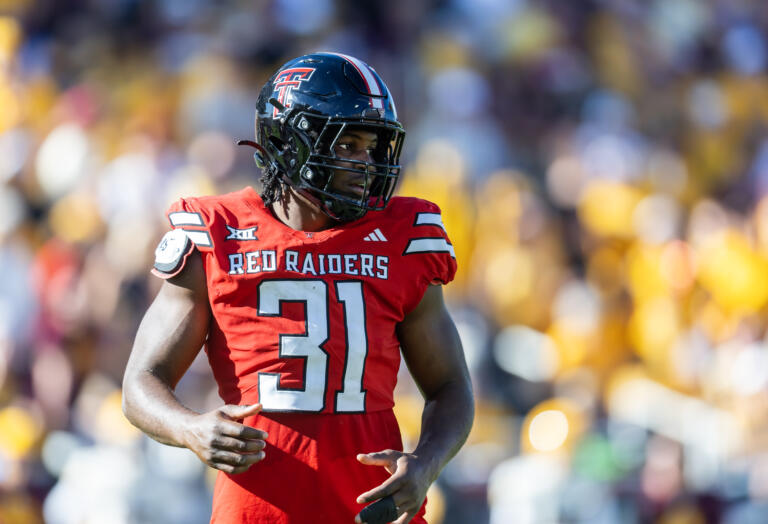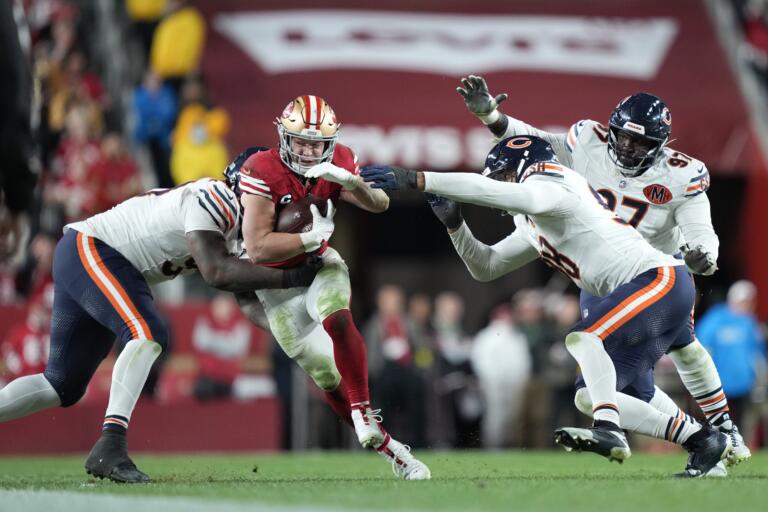Second-year back inherits heavy workload after Conner’s injury
GLENDALE, Ariz. (AP) — The Arizona Cardinals are no strangers to reshuffling their offensive identity, but Week 3 of the 2025 season delivered a gut punch that forced an immediate transition. Veteran running back James Conner went down with a season-ending foot injury, leaving second-year back Trey Benson to carry the load in an offense built around balance and ball control.
For Benson, the sudden promotion marks both a challenge and an opportunity. Drafted in the third round out of Florida State in 2024, he was viewed as the Cardinals’ back of the future. Now, that future is here.
Heavy Workload Ahead
Arizona leaned on Conner for stability, short-yardage power and veteran savvy. His injury removes the safety net from a young offense, and the Cardinals will now rely on Benson for every aspect of the run game. That means early-down carries, red-zone touches and pass protection assignments that often separate promising players from every-down starters.
Through three games this season, Benson has logged 21 carries for 125 yards, averaging 6.0 yards per attempt, and caught eight passes for 45 yards. That efficiency has already shown why coaches were eager to draft him: his burst, vision and balance translate at the NFL level.
The workload will spike now. Arizona will have no choice but to hand him 20-plus touches per week, especially with a quarterback situation that benefits from heavy play-action and a run game that keeps defenses honest.
A Skillset Built to Thrive
At six feet tall and 220 pounds, Benson brings size and power, but his skillset is defined by acceleration. His longest run of the year — a 52-yard dash in Week 1 — showed the home-run ability Conner lacked in recent seasons. Defenders expecting him to grind out short gains instead watched him break into the open field.
That explosiveness pairs with patience. Benson presses the line of scrimmage, waits for blocks to develop, and commits decisively once he sees daylight. As a rookie in 2024, he managed 63 carries for 291 yards, averaging 4.6 yards per carry, and scored one touchdown. He also caught six passes for 59 yards. Those numbers came in a limited role, but they hinted at a runner capable of handling more.
Now in 2025, he is averaging more yards per carry on fewer attempts, an indication of growth. His career totals — 84 carries for 416 yards at 5.0 yards per carry, plus 14 receptions for 104 yards — underline that efficiency even as the sample size remains small.
More Than Just Carries
Replacing Conner requires more than breaking long runs. The veteran excelled in short-yardage situations and was trusted to pick up blitzes on third down. Benson will be tested in those roles quickly. One missed block can derail a drive or risk the quarterback’s health. Coaches will need him to prove he can execute the small details that make an every-down back reliable.
That said, Benson’s versatility gives Arizona options. His eight receptions this season already match his rookie-year involvement as a receiver. Expanding his role as a pass catcher could ease pressure on the Cardinals’ passing attack, giving quarterbacks a safety valve and forcing defenses to cover him in space.
The Importance of the Run Game
Arizona’s offense depends on the ground game. A strong rushing attack controls tempo, sets up play-action passes and limits turnovers. Without it, the Cardinals risk putting too much on the quarterback and exposing a defense that benefits from longer rests.
The loss of Conner is significant because of his steady presence, but Benson’s upside could keep the offense intact — and even add an explosive wrinkle. If he can sustain efficiency at or near his current 6.0 yards per carry pace, Arizona’s run game may evolve into a bigger weapon rather than a liability.
Pressure and Opportunity
Defenses will adjust immediately. Stopping Benson will become priority No. 1 for opponents, who will stack the box and dare the Cardinals to win through the air. For Benson, that means facing loaded fronts and heavy contact. Early success in those situations could establish his legitimacy quickly.
For Arizona fans, the change represents both a loss and a glimpse of the future. Conner was reliable and respected, but Benson represents youth, speed and long-term potential. His promotion accelerates the franchise’s evaluation process: Can he be a workhorse back capable of anchoring an offense?
The Path Forward
Injuries often accelerate transitions, and the Cardinals now face one of their own. Benson’s development will shape not only this season but the future of Arizona’s backfield. The numbers suggest he’s ready. The opportunity ensures he’ll have the chance.
Conner’s absence leaves a void, but it also creates clarity. Trey Benson is now Arizona’s lead back. If he thrives, the Cardinals’ offense can maintain its balance and identity. If he struggles, the unit risks losing its foundation.
Either way, the second-year runner has been thrust into the spotlight. With speed, power and opportunity colliding, Benson’s time has come.








